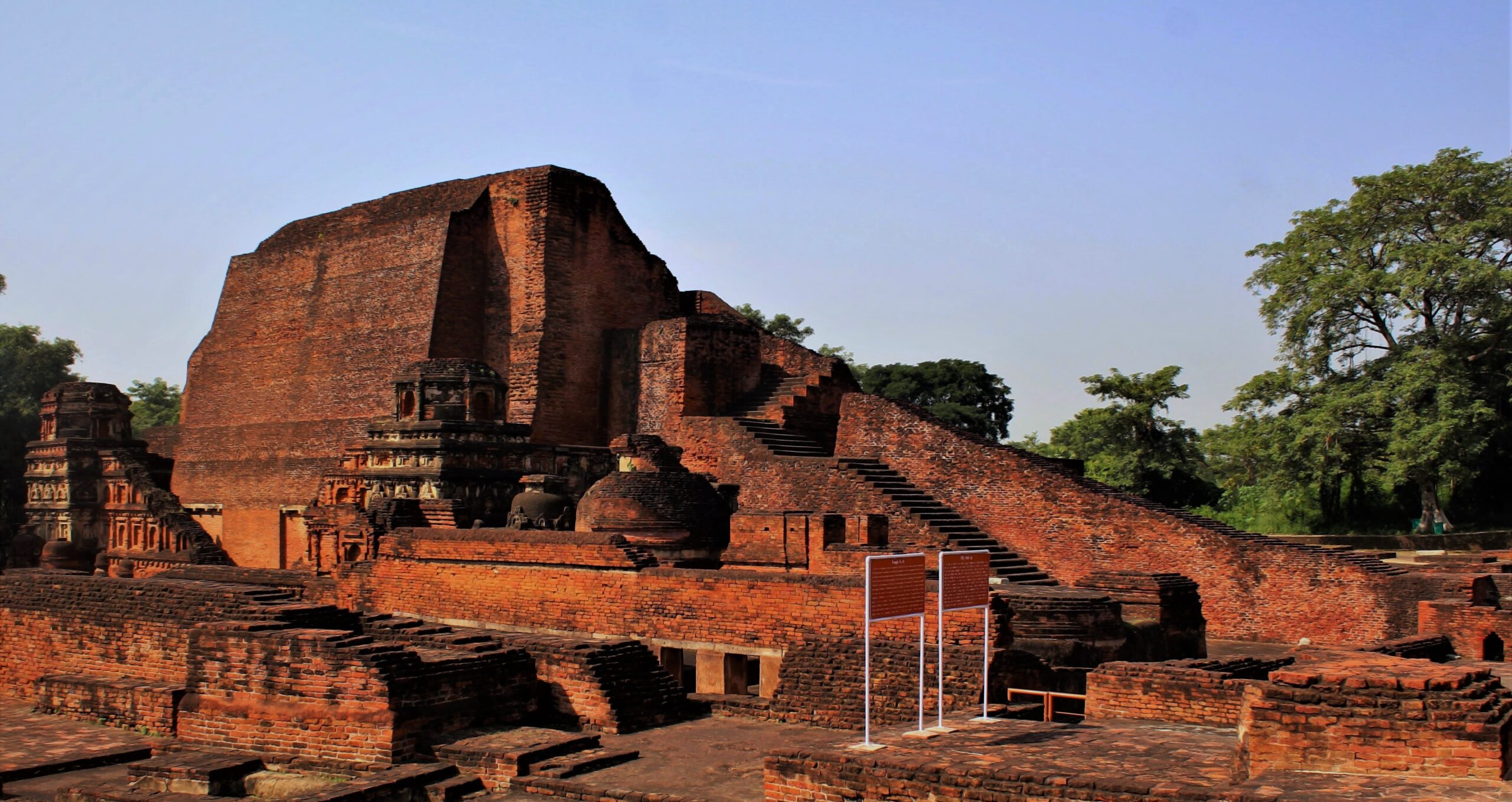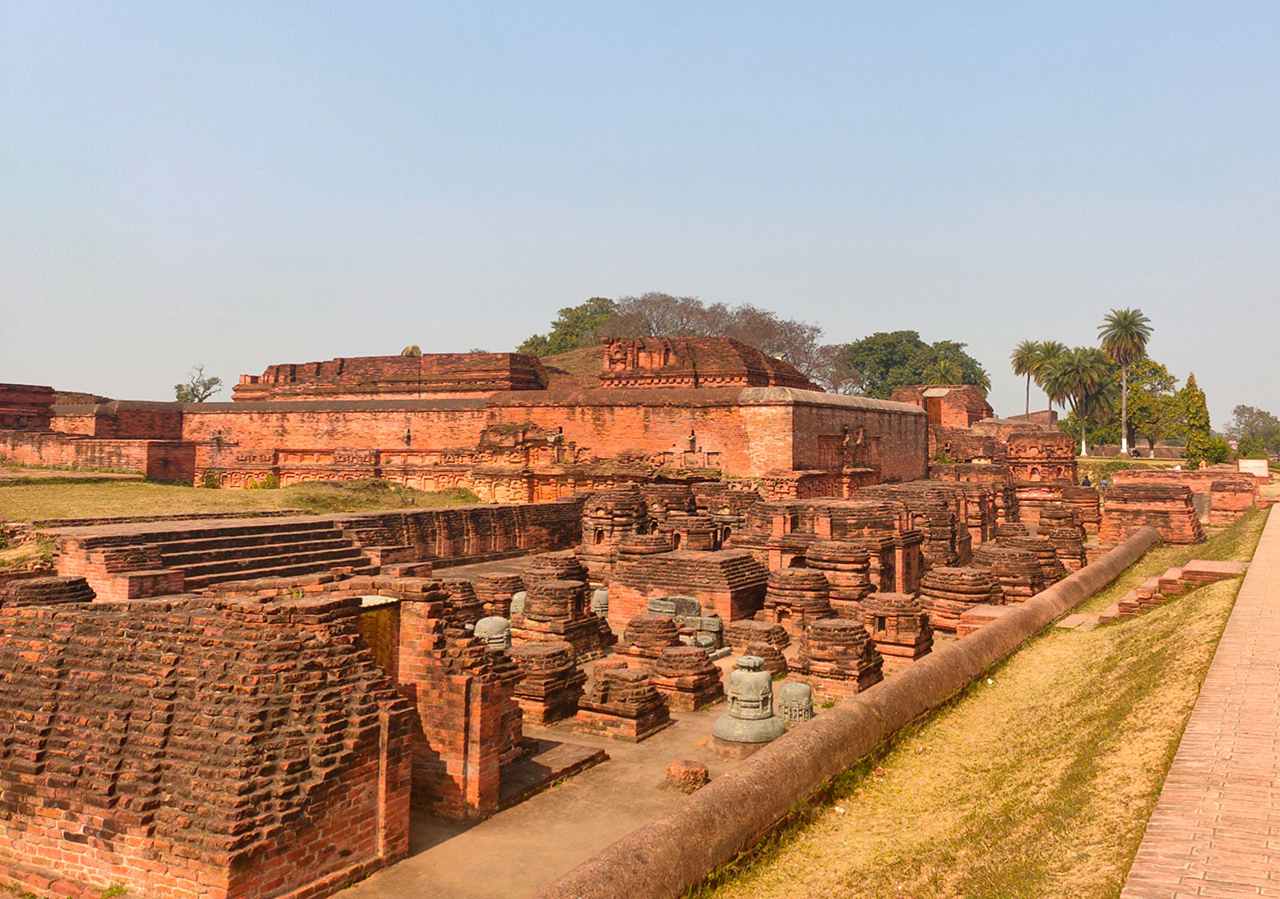
Nestled in the heart of present-day Bihar, India, Nalanda University stands as a timeless testament to the rich intellectual and cultural heritage of ancient India. Revered globally, this ancient university was a beacon of knowledge, attracting scholars and students from across Asia and beyond for over six centuries. From its foundation in 427 CE to its tragic destruction in 1193 AD, Nalanda epitomized the pursuit of knowledge, religious tolerance, and intellectual enlightenment.
In this article, we delve into the history, legacy, destruction, and revival of Nalanda University, exploring what made it the pride of ancient India and how its legacy continues to inspire generations.
The Glory of Nalanda: World’s First Residential University
Founded during the Gupta period in the 5th century CE, Nalanda University was not just an educational institution but a global center for learning. The term “Nalanda” derives from the Sanskrit words “Na-Alam-Da,” meaning “the giver of knowledge.” True to its name, Nalanda nurtured a multidisciplinary academic culture that integrated Buddhist teachings with secular subjects, creating an unparalleled repository of wisdom.
Campus and Infrastructure

Spread over a sprawling campus of 14 hectares, the excavated remains of Nalanda reveal its grandeur. The university had nine-story libraries housing over nine million manuscripts, making it the largest library of its time. The meticulously planned campus included:
- Nine hostels for 10,000 students.
- Residential quarters for 2,000 teachers.
- Lecture halls, meditation rooms, and community kitchens.
- A sophisticated drainage system to manage monsoon rains effectively.
The architectural brilliance of Nalanda influenced Buddhist institutions across Asia, with its open courtyards and lecture rooms inspiring designs in Thailand, Tibet, and beyond.
Academic Excellence at Nalanda
Multidisciplinary Learning
Nalanda was a pioneer in offering a holistic curriculum. Its syllabus included theology, logic, mathematics, astronomy, metaphysics, and medicine. The ancient Indian medical system of Ayurveda found a significant place in its teachings, spreading across the Indian subcontinent through alumni.
Global Reach
Nalanda attracted students and scholars from as far as Persia, Greece, China, and Tibet. The famed Chinese scholar Xuanzang, who studied and taught at Nalanda in the 7th century, described it as a hub of knowledge unparalleled in the world. He documented the rigorous admission process, where only one in ten applicants was admitted, highlighting the institution’s academic rigor.
Buddhist Influence
As a Buddhist monastic university, Nalanda was instrumental in disseminating Buddhist philosophy and knowledge across Asia. Scholars from Nalanda were pivotal in shaping the Buddhist traditions of China, Japan, and Korea. The Dalai Lama once remarked that “the source of all [Buddhist] knowledge we have comes from Nalanda.”
Destruction of Nalanda: A Tragic Chapter in History
Nalanda’s legacy of knowledge and peace came to a brutal halt in 1193 AD, when it was destroyed by Bakhtiyar Khilji, a Turkish invader. Khilji’s army ransacked the university, burning its vast library of manuscripts and killing thousands of monks and scholars.
The sheer scale of destruction was unprecedented. The library, which housed priceless texts on diverse subjects, burned for three months, symbolizing the devastating loss of ancient knowledge. This marked the end of Nalanda’s glorious era, and the university fell into obscurity for centuries.
Rediscovery and Revival: Honoring the Legacy
Rediscovery by the British

In the 19th century, British archaeologists rediscovered the ruins of Nalanda, sparking global interest in its history. Excavations revealed the university’s architectural marvels, including its iconic seven-tiered stupa, meditation halls, and residential quarters.
Establishment of the Modern Nalanda University
In 2010, the Indian Parliament passed an act to revive Nalanda as a modern university, symbolizing India’s commitment to preserving its ancient legacy. Located in Rajgir, Bihar, the new Nalanda University was inaugurated in 2024 by Prime Minister Narendra Modi.
A Green Campus with Global Collaboration
Spread over 485 acres, the modern campus is designed with sustainability at its core, implementing a Net Zero eco-recycling strategy. It is supported by 18 member countries of the East Asia Summit, reflecting its global significance.
Nalanda now offers postgraduate programs in:
- Historical Studies
- Ecology and Environment Studies
- Buddhist Studies
- Philosophy and Comparative Religions
- Languages and Literature
- Management Studies
Courses also include language diplomas in Sanskrit, Pāli, Tibetan, Japanese, and Korean, fostering cross-cultural academic exchange.
The Eternal Relevance of Nalanda
Even after more than a millennium, Nalanda continues to inspire with its values of academic excellence, religious tolerance, and environmental sustainability. Its enduring legacy reminds us of the heights humanity can achieve when knowledge and culture are prioritized.
Lessons from Nalanda
- Inclusivity and Diversity: Nalanda was a melting pot of cultures, proving that intellectual growth thrives in an environment of inclusivity.
- Sustainability: The ancient drainage systems of Nalanda highlight the importance of sustainable urban planning, a lesson relevant even today.
- Preservation of Knowledge: The tragic destruction of Nalanda underscores the value of preserving and digitizing knowledge to protect it from future losses.
Conclusion: Nalanda’s Timeless Legacy
Nalanda University is not just a relic of the past but a symbol of what India once stood for—a global beacon of knowledge, innovation, and cultural exchange. Its revival as a modern university carries forward this rich legacy, adapting it to the needs of the contemporary world.
As we honor Nalanda, we also reaffirm our commitment to the pursuit of knowledge and the preservation of cultural heritage. Whether as a historical marvel or a modern institution, Nalanda continues to inspire scholars and leaders worldwide, proving that the quest for knowledge is truly timeless.
